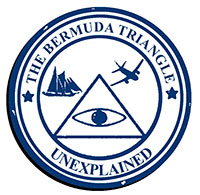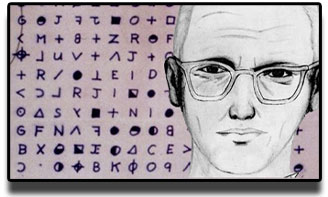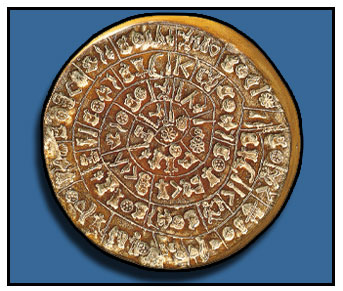 |
 |
 |

NORTHERN SENTINEL ISLAND: AN EXTREMELY DANGEROUS DESTINATION THAT CAN NOT BE VISITED In fact, it is considered one of the most dangerous places in the world, where anyone who visits this island has a high chance of dying. There are records of the first victims from the 18th century, especially when the Jesuits and other religious entities tried to connect with the settlers. Read More >>>North Sentinel Island is one of the Andaman Islands, an Indian archipelago in the Bay of Bengal which also includes South Sentinel Island. It is home to the Sentinelese, an indigenous tribe in voluntary isolation who have defended, often by force, their protected isolation from the outside world. The island is about 8 kilometres (5.0 mi) long and 7 kilometres (4.3 mi) wide, and its area is approximately 60 square kilometres (23 sq mi). How do the 'lost tribe' of the island of North Sentinel live?Although contact with the outside world has been minimal, there are certain facts that are known about the lifestyle of the North Sentinel tribe.
NO VISITS:Due to their behavior around non-tribal people, the government of India and the governorate of the Andaman and Nicobar Islands have warned tourists about trespassing on North Sentinel Island. In fact, it is considered one of the most dangerous places in the world, where anyone who visits this island has a high chance of dying. There are records of the first victims from the 18th century, especially when the Jesuits and other religious entities tried to connect with the settlers. And in his records, the famous explorer and navigator Marco Polo referred to these inhabitants as 'cruel and ruthless people'. On the other hand, during the earthquake and subsequent tsunami that struck Indonesia and some island territories, North Sentinel Island was severely affected. However, the Indian government tried to help and check the damage, but they were repelled by arrows fired by the Sentinelese. Likewise, there were records of two fishermen who spent the night on that island and got lost, where they were massacred by the locals. The last record of an attack occurred in 2018, when a Christian missionary was killed by the tribe. For this reason, it is totally forbidden to spend the night or enter that island, where the locals consider anyone who meddles in their territory to be an enemy. |
|
| Malaysia Airlines Flight 370 Possible causes of the aircraft’s disappearance  In the weeks following flight 370’s disappearance, theories ranged from mechanical failure to pilot suicide. The loss of the ACARS and transponder signals spurred ongoing speculation about some form of hijacking, but no individual or group claimed responsibility, and it seemed unlikely that hijackers would have flown the plane to the southern Indian Ocean. In the weeks following flight 370’s disappearance, theories ranged from mechanical failure to pilot suicide. The loss of the ACARS and transponder signals spurred ongoing speculation about some form of hijacking, but no individual or group claimed responsibility, and it seemed unlikely that hijackers would have flown the plane to the southern Indian Ocean.
Read More >>>That the signals had likely been switched off from inside the aircraft suggested suicide by one of the crew, but nothing obviously suspicious was found in the behaviour of the captain, the first officer, or the cabin crew immediately prior to the flight. In 2016, New York magazine reported that the pilot, on his home flight simulator, had flown over the southern Indian Ocean less than a month before the plane vanished, a simulated flight that closely matched the missing aircraft’s final path; this revelation, in addition to the release of greater information about the pilot’s personal life, lent credence to the notion of a premeditated pilot-induced mass murder-suicide. After the discovery of the debris, some speculated that flight 370 was shot down, but no evidence of shrapnel from a missile or other projectiles has been found. |
|
Some speculate that unknown and mysterious forces account for the unexplained disappearances, such as extraterrestrials capturing humans for study; the influence of the lost continent of Atlantis; vortices that suck objects into other dimensions; and other whimsical ideas. Some explanations are more grounded in science, if not in evidence. These include oceanic flatulence (methane gas erupting from ocean sediments) and disruptions in geomagnetic lines of flux. Read More >>>Environmental considerations could explain many, if not most, of the disappearances. The majority of Atlantic tropical storms and hurricanes pass through the Bermuda Triangle, and in the days prior to improved weather forecasting, these dangerous storms claimed many ships. Also, the Gulf Stream can cause rapid, sometimes violent, changes in weather. Additionally, the large number of islands in the Caribbean Sea creates many areas of shallow water that can be treacherous to ship navigation. And there is some evidence to suggest that the Bermuda Triangle is a place where a “magnetic” compass sometimes points towards “true” north, as opposed to “magnetic” north. The U.S. Navy and U.S. Coast Guard contend that there are no supernatural explanations for disasters at sea. Their experience suggests that the combined forces of nature and human fallibility outdo even the most incredulous science fiction. They add that no official maps exist that delineate the boundaries of the Bermuda Triangle. The U. S. Board of Geographic Names does not recognize the Bermuda Triangle as an official name and does not maintain an official file on the area. The ocean has always been a mysterious place to humans, and when foul weather or poor navigation is involved, it can be a very deadly place. This is true all over the world. There is no evidence that mysterious disappearances occur with any greater frequency in the Bermuda Triangle than in any other large, well-traveled area of the ocean. Aircraft incidents:
1945: December 5, Flight 19 (five TBF Avengers) lost with 14 airmen, and later the same day PBM Mariner BuNo 59225 lost with 13 airmen while searching for Flight 19. 2017: February 23, The Turkish Airlines flight TK183 (an Airbus A330-200) was forced to change its direction from Havana, Cuba to Washington Dulles airport after some mechanical and electrical problems occurred over the triangle. 2017: May 15, A private MU-2B aircraft was at 24,000 feet when it vanished from radar and radio contact with air traffic controllers in Miami.[13] Plane wreckage was found later. Incidents at sea1800: USS Pickering, on course from Guadeloupe to Delaware, lost with 91 people on board. (Possibly lost in a gale) 1814: USS Wasp, last known position was the Caribbean, lost with 140 people on board. (Possibly lost in a storm) 1824: USS Wild Cat, on course from Cuba to Tompkins Island, lost with 14 people on board. (Lost in a gale with 31 on board) 1840: Rosalie, found abandoned. (Possibly the "Rossini" found derelict) 1881: According to legend, a sailing ship, the Ellen Austin, found a derelict vessel and placed a crew to sail the vessel to port. Two versions of what happened to the vessel are: the vessel was either lost in a storm or was found again without a crew. Lawrence David Kusche author of "The Bermuda Triangle Mystery-Solved" found no mention in 1880 or 1881 newspapers of this alleged incident-he did trace the legend to a book by Rupert Gould "The Stargazer Talks" published in 1943. The Ellen Austin did exist; a check from Lloyd's of London records proved the existence of Meta, built in 1854, and that in 1880, Meta was renamed Ellen Austin. There are no casualty listings for this vessel, or any vessel at that time, that would suggest a large number of missing men were placed on board a derelict that later disappeared although one website includes the alleged derelict vessel incident it does find that Rupert Gould talked about the legend on radio in the 1930s; likewise the website traces the derelict story to a June 1906 newspaper story-which claims the derelict ship incident took place in 1891; however the 1906 story does not give a reference of where this story came from. 1918: USS Cyclops, collier, left Barbados on March 4, lost with all 306 crew and passengers en route to Baltimore, Maryland. 1921: January 31, Carroll A. Deering, five-masted schooner, Captain W. B. Wormell, found aground and abandoned at Diamond Shoals, near Cape Hatteras, North Carolina. 1925: December 1, SS Cotopaxi, having departed Charleston, South Carolina two days earlier bound for Havana, Cuba, radioed a distress call reporting that the ship was sinking. She was officially listed as overdue on 31 December. In 1985 an unknown shipwreck was found off St Augustine, Florida; in 2020 it was identified as the remains of the SS Cotopaxi. 1941: USS Proteus (AC-9), lost with all 58 persons on board in heavy seas, having departed St. Thomas in the Virgin Islands with a cargo of bauxite on 23 November. The following month, her sister ship USS Nereus (AC-10) was lost with all 61 persons on board, having also departed St. Thomas with a cargo of bauxite, on 10 December. According to research by Rear Admiral George van Deurs, USN, who was familiar with this type of ship from their service in the USN, the acidic coal cargo would seriously erode the longitudinal support beams, making these aging and poorly constructed colliers extremely vulnerable to breaking up in heavy seas. They were both sister ships of the USS Cyclops. 1958: Revonoc. A 43-foot racing yawl was lost with owner Harvey Conover and four others aboard, between Key West and Miami in a hurricane. The only trace found was the Revonoc's 14-foot skiff, near Jupiter, Florida. 1963: SS Marine Sulphur Queen, lost with 39 crewmen, having departed Beaumont, Texas, on 2 February with a cargo of 15,260 tons of sulfur. She was last heard from on 4 February, when she was in rough, nearly following seas of 16 feet, with northerly winds of 25–46 knots, and listed as missing two days later. The US Coast Guard subsequently determined that the ship was unsafe and not seaworthy, and never should have sailed. The final report suggested four causes of the disaster, all due to poor design and maintenance of the ship. 1967: December 22, Miami hotel owner and yachtsman Dan Burack set out on his cabin cruiser Witchcraft with a priest named Patrick Horgan. The ship was taken one mile off the Miami coastline so that Burack and Horgan could view the Christmas lights visible from the shore. That night, Burack radioed a distress call to the Coast Guard, informing them that the boat's propeller had struck something underwater, and that the vessel would need to be towed in. The Coast Guard requested that he send up a flare in roughly 20 minutes so that the boat could be more easily located. The official who received the call reportedly later noted that Burack did not seem too concerned about the Witchcraft, a boat that Burack had fitted with a special floatation device in its hull. When the Coast Guard arrived at the location from which Burack called, he, Horgan, and the Witchcraft were nowhere to be found. Over the following days, a search was conducted over hundreds of square miles of ocean, but the boat and its passengers were never found. 2015: Late July, two 14-year-old boys, Austin Stephanos, and Perry Cohen went on a fishing trip in their 19-foot boat. Despite the 15,000 square nautical mile wide search by the Coast Guard, the pair's boat was found a year later off the coast of Bermuda, but the boys were never seen again. 2015: October 1, SS El Faro, with a crew of 33 aboard, sank off of the coast of the Bahamas within the triangle after sailing into Hurricane Joaquin. Search crews identified the vessel 15,000 feet below the surface. |
|
DB Cooper
In six hours, the man now known as D.B. Cooper flew to Seattle, extorted nearly $200,000 and four parachutes from Northwest Orient Airlines, strapped on a chute like an old pro, vaulted into the skies over Western Washington and disappeared. He was never found, however, and this remains the only unsolved case in US aviation history. |
|
Amelia Earhart's disappearance
Read More >>>For her accomplishments alone, Earhart earned herself a degree of legendary status. However, it is her unfortunate disappearance after she set off on her ambitious global flight of 1937 that has captivated people to this day. On June 1, 1937, Earhart and Fred Noonan, her navigator, set out from Oakland, California, on their eastbound transcontinental flight on a twin-engine Lockheed Electra plane. Less than a month later they reached Lae, New Guinea, having flown 22,000 miles and with 7,000 more to go before they reached Oakland once again. After departing from Lae, they had to fly another 2,500 miles before they reached their next stop—Howland Island, an incredibly small island in the Pacific Ocean—to refuel. Unfortunately, overcast skies, radio transmission issues, and low fuel meant that Earhart and Noonan did not reach their destination. Despite extreme efforts to locate the plane, which ended up constituting the most expensive air and sea search in American history up to that point, there was no sign of Earhart or Noonan anywhere. Earhart was officially declared dead on January 5, 1939. In its report, the U.S. government concluded that Earhart and Noonan had run out of fuel and crashed into the vast ocean. What happened after the crash is still unclear. Given the mystery surrounding this event, several theories have emerged that are still being debated to this day. One theory suggests that Earhart was a secret agent for the U.S. government and that she was taken prisoner by the Japanese for trying to spy on Japanese-occupied islands. The more widely believed theory is that Earhart and Noonan reached an uninhabited island, Nikumaroro, where artifacts such as tools and aircraft wreckage have been discovered. No theory has ultimately been proven true, and so Earhart’s disappearance remains one of the most popular mysteries of American history. Despite the tragic end to Earhart’s life, her accomplishments and her legacy still serve as an inspiration to thousands of budding young pilots everywhere. |
|
|
|
|
|
Stories of a mysterious creature residing in Scotland's Loch Ness have been circulating for generations. No concrete proof of the alleged "Nessie" has ever been discovered despite numerous sightings and thorough investigations. |
|
|
|
The Japanese secrets to a longer life
Read More >>>
Discovering your ikigai, a concept closely linked to the long life expectancy in Japan, means finding a reason for being or something that makes life fulfilling. Japanese individuals are acutely aware of the importance of identifying their ikigai in order to maintain a sense of purpose and enjoyment in life, whether it be raising their children or pursuing a hobby that brings them satisfaction and fulfillment. The residents of Okinawa Island in Japan, where many people live for more than a century, adhere to the Hara hachi bu approach to eating, which involves stopping eating when they are approximately 80% full. The belief is that consuming only the necessary amount of food, rather than overeating, can potentially delay cellular aging. |
|
The mystery of the Phaistos Disc
Read More >>>
The signs of the Phaistos Disc were impressed with individual stamps, as in modern typography, although in some instances the same symbol was produced multiple times using different stamps. The maker of the disc made a few mistakes on the fine-grained clay: some of the symbols were erased before reinscription, in other sections margins were widened to fit everything in. The mystery of the Phaistos Disc is a story that sounds like something out of an Indiana Jones movie. Discovered by Italian archaeologist Luigi Pernier in 1908 in the Minoan palace-site of Phaistos, the disc is made of fired clay and contains mysterious symbols that may represent an unknown form of hieroglyphics. It is believed that it was designed sometime in the second millennium B.C. Some scholars believe that the hieroglyphs resemble symbols of Linear A and Linear B, scripts once used in ancient Crete. The only problem? Linear A also eludes decipherment. Today the disc remains one of the most famous puzzles of archaeology. |
|
Georgia Guidestones
Read More >>>
The Georgia Guidestones dominated the highest elevation in the county, which is located in the northeastern Piedmont section of the state. Known to some as the American Stonehenge because of their striking resemblance to England’s famous monument, the Georgia Guidestones were unveiled on March 22, 1980. The inscriptions on the Guidestones were meant for current and future generations. Sandblasted along the square capstone sitting atop the structure was the basic message: “Let these be guidestones to an age of reason,” in Babylonian cuneiform, Egyptian hieroglyphics, Sanskrit, and classical Greek. The four granite slabs, each weighing 42,137 pounds and standing more than sixteen feet in height, listed ten “guides” for mankind in eight different languages. The languages represented on the four major stones were Arabic, Chinese, English, Hebrew, Hindi, Russian, Spanish, and Swahili. The engraved messages dealt with four major areas: governance and the establishment of a world government, population and reproduction control, the environment and humankind’s relationship to nature, and spirituality. Astronomical phenomena were also associated with the Guidestones. The four large upright granite slabs that composed the face of the structure were oriented to the limits of the moon’s migration during the course of the year. An eye-level, oblique hole drilled in the Gnomen stone looked upward toward the celestial heavens and oriented on Polaris, the North Star. In the middle of the Gnomen stone was a large slot with a hole cut through the granite, orienting the monument with summer and winter solstices. The Guidestones also acted as an enormous sundial. Drilled through the capstone was a seven-eighths-inch hole, which allowed sunlight to shine on the southern face of the Gnomen stone at noon. |
|
WHERE IS JIMMY HOFFA?
Read More >>>
One popular theory was that Hoffa's body was buried beneath Giants Stadium in New Jersey. However, this theory has been debunked. On Oct. 25 and 26, 2021, FBI agents visited a former landfill in New Jersey to conduct a "site survey," according to The New York Times. The survey is a follow-up to a a deathbed confession by a landfill worker claiming that people had charged he and his father with burying Hoffa's body in a steel barrel under the dump in 1975. The agents apparently didn't find the steel barrel, Live Science reported. "Nothing of evidentiary value was discovered during that search," Mara Schneider, an FBI spokeswoman in Detroit, said according to The Guardian in July 2022. "While we do not currently anticipate any additional activity at the site, the FBI will continue to pursue any viable lead in our efforts to locate Mr Hoffa." The identity of his killer is also unclear. Before his death in 2006, Richard "The Iceman" Kuklinski, a hit man, claimed to have killed Hoffa and dumped his body in a scrap yard, The Guardian reported. An author named Philip Carlo visited Kuklinski in prison before he died and wrote a book on Kuklinski's confessions. After the book came out, a number of police officers cast doubt on the confession in media interviews. As the years go by, it appears increasingly unlikely that Hoffa's remains will ever be found. |
|
Nazca Geoglyphs
Read More >>>
They are the most outstanding group of geoglyphs anywhere in the world and are unmatched in its extent, magnitude, quantity, size, diversity and ancient tradition to any similar work in the world. The concentration and juxtaposition of the lines, as well as their cultural continuity, demonstrate that this was an important and long-lasting activity, lasting approximately one thousand years. Intensive study of the geoglyphs and comparison with other manifestations of contemporary art forms suggests that they can be divided chronologically from the Middle and Late Formative (500 BC – 200 AD) to the Regional Development Period (200 – 500 AD), highlighting the Paracas phase (400 - 200 BC) and the Nasca phase (200 BC - 500 AD). There are two categories of glyphs: the first group is representational, depicting in schematic form a variety of natural forms including animals, birds, insects, and other living creatures and flowers, plants, and trees, deformed or fantastic figures and objects of everyday life. There are very few anthropomorphic figures. The second group comprises the lines, which are generally straight lines that criss-cross certain parts of the pampas in all directions. Some are several kilometres in length and form designs of many different geometrical figures - triangles, spirals, rectangles, wavy lines, etc. Others radiate from a central promontory or encircle it. Yet another group consists of so-called 'tracks', which appear to have been laid out to accommodate large numbers of people. |
|
Stonehenge
Read More >>>
Stonehenge is the most architecturally sophisticated prehistoric stone circle in the world, while Avebury is the largest in the world. Stonehenge has perhaps been the focus of more theories about its origin and purpose than any other prehistoric monument. Today, the interpretation which is most generally accepted is that of a prehistoric temple aligned with the movements of the sun. It is the most striking example of the ceremonial complexes emerging across Britain and Ireland at this time. These were places to honour the ancestors and mark important moments in the calendar. At the centre of this belief system was the sun, with the solstice alignments enshrined within the fabric of the monument. Stonehenge was not ‘one’ monument, but rather was built, altered, and revered for over 1,500 years, around 100 generations. Stonehenge is an icon of the past and a powerful image of ancient achievement. |
|
IS THERE A CITY OF ATLANTIS?
Read More >>>
While no serious scholar believes that this story is literally true, some have speculated that the legend could have been inspired, in part, by real events that happened in Greek history. One possibility is that the Minoan civilization (as it's now called), which flourished on the island of Crete until about 1400 B.C., could have inspired the story of Atlantis. Although Crete is in the Mediterranean, and not the Atlantic, Minoan settlements suffered considerable damage during the eruption of Thera, a volcano in Greece. Additionally, archaeologists found that the Minoans were eventually overcome (or forced to join with) a group of people called the Mycenaeans, who were based on mainland Greece. It's unlikely that this debate will ever be fully settled. |
|
WHO KILLED JFK?
Read More >>>
The most widely accepted explanation is that Oswald killed JFK on his own and Ruby killed Oswald, on his own volition. Ruby's stated motivation was to spare Jacqueline Kennedy "the discomfiture of [Oswald] coming back to trial." However there are still a significant number of professional historians, along with many amateurs, who do not agree with this explanation and since JFK's death, numerous alternative explanations have been brought forward by historians and amateurs. Given that significant new evidence is unlikely to appear, a firm consensus will probably never be reached. |
|
FATE OF THE ARK OF THE COVENANT
Read More >>>
The fate of the ark is unclear. Ancient sources indicate that the ark was either carried back to Babylon or hidden before the city was captured. It's also possible that the ark was destroyed during the city's sacking. In any event, the ark's location is unknown. Since the disappearance, a number of stories and legends about the ark's fate have been told. One story suggests the ark eventually made its way to Ethiopia, where it is kept today. Another story says the ark was divinely hidden and will not appear until a messiah arrives. |
  © 1980-2024 larryposs.com. All rights reserved |
 North Sentinel Island is one of the Andaman Islands, an Indian archipelago in the Bay of Bengal which also includes
North Sentinel Island is one of the Andaman Islands, an Indian archipelago in the Bay of Bengal which also includes 
 In 1971, a chain-smoking man in a business suit climbed aboard a Boeing 727 in Portland carrying an attache case full of dynamite. Then he committed one of America’s weirdest and most enduring unsolved crimes.
In 1971, a chain-smoking man in a business suit climbed aboard a Boeing 727 in Portland carrying an attache case full of dynamite. Then he committed one of America’s weirdest and most enduring unsolved crimes. Amelia Earhart is one of history’s most prominent figures in aviation, having inspired numerous movies, books, and plays. Born in 1897 in Kansas, Earhart rose to fame because of her trailblazing accomplishments as a female aviator. At the time, being both a woman and a pilot meant being met with many obstacles, and even her own family discouraged her from learning how to fly. However, despite those challenges, she set many records in aviation and became the first female pilot to fly alone across the Atlantic Ocean.
Amelia Earhart is one of history’s most prominent figures in aviation, having inspired numerous movies, books, and plays. Born in 1897 in Kansas, Earhart rose to fame because of her trailblazing accomplishments as a female aviator. At the time, being both a woman and a pilot meant being met with many obstacles, and even her own family discouraged her from learning how to fly. However, despite those challenges, she set many records in aviation and became the first female pilot to fly alone across the Atlantic Ocean. George Reeves (January 5, 1914 – June 16, 1959)
George Reeves (January 5, 1914 – June 16, 1959) Jack the Ripper's identity
Jack the Ripper's identity  The Loch Ness Monster
The Loch Ness Monster  The Zodiac Murderer
The Zodiac Murderer  How can we live longer? You’ll find the answer to this age-old question (pun intended) in Japan. The Japanese life expectancy is the world’s highest, at 87.32 years for women and 81.25 years for men. The average lifespan of the Japanese is the highest it has ever been, and they keep getting older. In 2019, the number of Japanese aged 90 reached 2.31 million, including over 71,000 centenarians. So have the Japanese found the fountain of youth? We delve into Japan’s top secrets to good health and longevity.
How can we live longer? You’ll find the answer to this age-old question (pun intended) in Japan. The Japanese life expectancy is the world’s highest, at 87.32 years for women and 81.25 years for men. The average lifespan of the Japanese is the highest it has ever been, and they keep getting older. In 2019, the number of Japanese aged 90 reached 2.31 million, including over 71,000 centenarians. So have the Japanese found the fountain of youth? We delve into Japan’s top secrets to good health and longevity.  This enigmatic fired-clay disc, dating to around 1700-1600 BC, was discovered in the palace of Phaistos on the Greek island of Crete. It is 16.5cm in diameter, 2.1cm thick, and its two faces bear 45 different pictographic signs – a total of 241 symbols – spiralling from the edge to the centre within incised bands. Vertical hand-carved lines group the symbols into sets of two to seven, probably forming single words or syllables.
This enigmatic fired-clay disc, dating to around 1700-1600 BC, was discovered in the palace of Phaistos on the Greek island of Crete. It is 16.5cm in diameter, 2.1cm thick, and its two faces bear 45 different pictographic signs – a total of 241 symbols – spiralling from the edge to the centre within incised bands. Vertical hand-carved lines group the symbols into sets of two to seven, probably forming single words or syllables. The Georgia Guidestones, sometimes referred to as the "American Stonehenge," is a granite monument erected in Elbert County, Georgia, in 1979. The stones are engraved in eight languages — English, Spanish, Swahili, Hindi, Hebrew, Arabic, Chinese and Russian — each relaying 10 "new" commandments for "an Age of Reason." The stones also line up with certain astronomical features.
The Georgia Guidestones, sometimes referred to as the "American Stonehenge," is a granite monument erected in Elbert County, Georgia, in 1979. The stones are engraved in eight languages — English, Spanish, Swahili, Hindi, Hebrew, Arabic, Chinese and Russian — each relaying 10 "new" commandments for "an Age of Reason." The stones also line up with certain astronomical features. 
 Located in the arid Peruvian coastal plain, some 400 km south of Lima, the geoglyphs of Nasca and the pampas of Jumana cover about 450 km2 . These lines, which were scratched on the surface of the ground between 500 B.C. and A.D. 500, are among archaeology's greatest enigmas because of their quantity, nature, size and continuity. The geoglyphs depict living creatures, stylized plants and imaginary beings, as well as geometric figures several kilometres long. They are believed to have had ritual astronomical functions.
Located in the arid Peruvian coastal plain, some 400 km south of Lima, the geoglyphs of Nasca and the pampas of Jumana cover about 450 km2 . These lines, which were scratched on the surface of the ground between 500 B.C. and A.D. 500, are among archaeology's greatest enigmas because of their quantity, nature, size and continuity. The geoglyphs depict living creatures, stylized plants and imaginary beings, as well as geometric figures several kilometres long. They are believed to have had ritual astronomical functions.  Stonehenge is the world’s best-known ancient stone circle, lying at the heart of one of the richest archaeological landscapes in Europe. Built around the same time as the Great Pyramid in Egypt, 4,500 years ago, the finished monument of massive and finely dressed sarsen stone was unlike anything ever seen across Europe. It is a powerful memorial to a key period of British and European history, a time of transformations when landscape was being monumentalised in completely new ways as part of communities’ changing relationships with the land.
Stonehenge is the world’s best-known ancient stone circle, lying at the heart of one of the richest archaeological landscapes in Europe. Built around the same time as the Great Pyramid in Egypt, 4,500 years ago, the finished monument of massive and finely dressed sarsen stone was unlike anything ever seen across Europe. It is a powerful memorial to a key period of British and European history, a time of transformations when landscape was being monumentalised in completely new ways as part of communities’ changing relationships with the land.  Writing in the fourth century B.C., the Greek philosopher Plato told a story of a land named Atlantis that existed in the Atlantic Ocean and supposedly conquered much of Europe and Africa in prehistoric times. In the story, the prehistoric Athenians strike back against Atlantis in a conflict that ends with Atlantis vanishing beneath the waves.
Writing in the fourth century B.C., the Greek philosopher Plato told a story of a land named Atlantis that existed in the Atlantic Ocean and supposedly conquered much of Europe and Africa in prehistoric times. In the story, the prehistoric Athenians strike back against Atlantis in a conflict that ends with Atlantis vanishing beneath the waves.  This is one of the biggest mysteries in American history that will never be resolved to everyone's satisfaction. On Nov. 22, 1963, President John F. Kennedy was shot in Dallas by Lee Harvey Oswald (although some speculate that he wasn't the only shooter). On Nov. 24, 1963, before Oswald could stand trial, Oswald was fatally shot by nightclub owner Jack Ruby. Ruby died of lung cancer on Jan. 3, 1967.
This is one of the biggest mysteries in American history that will never be resolved to everyone's satisfaction. On Nov. 22, 1963, President John F. Kennedy was shot in Dallas by Lee Harvey Oswald (although some speculate that he wasn't the only shooter). On Nov. 24, 1963, before Oswald could stand trial, Oswald was fatally shot by nightclub owner Jack Ruby. Ruby died of lung cancer on Jan. 3, 1967.  In 587 B.C., a Babylonian army, under King Nebuchadnezzar II, conquered Jerusalem, sacking the city and destroying the First Temple, a building used by the Jewish people to worship god. The First Temple contained the Ark of the Covenant, which carried tablets recording the 10 Commandments.
In 587 B.C., a Babylonian army, under King Nebuchadnezzar II, conquered Jerusalem, sacking the city and destroying the First Temple, a building used by the Jewish people to worship god. The First Temple contained the Ark of the Covenant, which carried tablets recording the 10 Commandments.